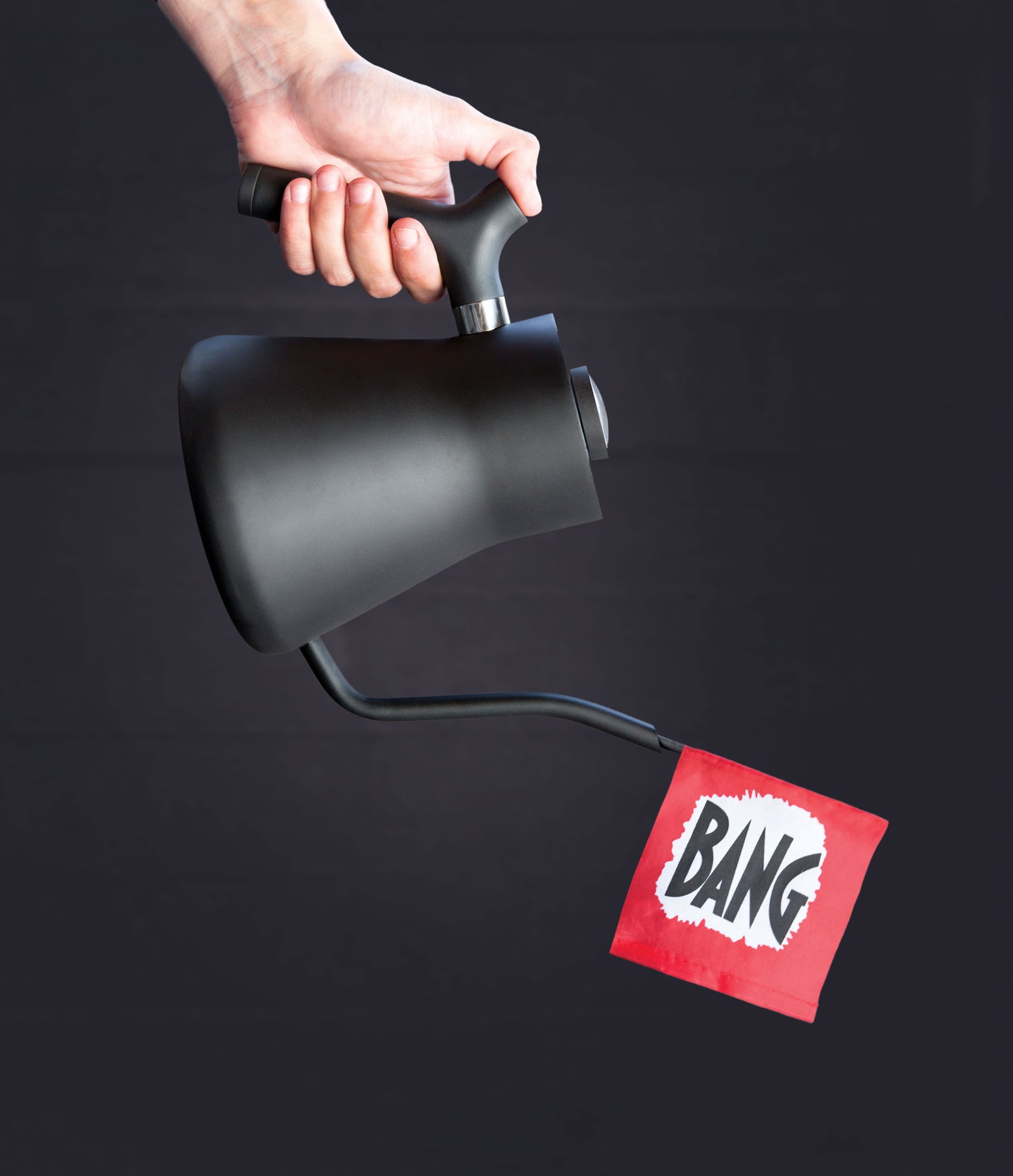Why is the slow pour important?

You keep hearing everyone fuss over their meticulous slow pour, but do you know why? This week we’re focusing on why a slow, consistent pour is so vital to the pour-over.
There’s a lot of talk about pour-over and how it creates a clean, vibrant cup after 3-4 minutes of tedious pouring. A few years back, one of the first major articles to discuss pour-over was The New York Times’ "Coffee's slow dance". Since then, we’ve heard a lot of chatter about this meticulous slow pour from places like Buzzfeed or HuffPost, but not much on why it’s important.
The two big variables that dictate your brew time are TIME and SURFACE AREA. We’re always balancing these two for optimal extraction (aka optimal flavor).
TIME
The more time water is in contact with coffee grinds, the more flavor it will extract (to an extent). Sounds simple enough, right? But when you add surface area to the equation, it gets a bit more complicated.
The more surface area there is for water to contact the grinds, the more flavor can be extracted. Coarser grinds take longer to extract because it takes time for the water to seep into the grind and pull out all components of the coffee. When the grind size is smaller, those components are more accessible and thus extract faster into coffee.
Extracting coffee is a chemical interaction where solutes (components of coffee) are dissolving into a solvent (water). If you remember from high school chemistry, some compounds take longer to dissolve than others. Coffee has more soluble and less soluble compounds packed into those grinds. Light, fruity flavors (fruit acids and organic salts) dissolve first. The nutty, caramel, and chocolatey flavors (due to sugar caramelization during roasting), as well as the wood, malt, and ash flavors you get from organic matter (cellulose), are harder to extract out of the grinds.
Surface area will help you reach those flavors by making those compounds more accessible. Time will also help, by giving water a chance to reach all of those compounds.
Of course, there’s a balance.
For pour-over, your grinds should fall somewhere in the medium range (medium-fine, medium, or medium-coarse). The reason we can’t use a smaller grind size without producing bitter coffee is because we are using gravity to push our water through. The finer the grind size, the faster the extraction needed due to the high amount of surface area. For fine grinds, you need a pump (like in an espresso machine) to push the water through fast enough for a proper extraction. Because pour-over is a gravity fed process, we need medium grinds which take a longer amount of time to extract flavors due to less surface area.
Enter the slow pour!
A pour-over kettle, like our Stagg or Stagg EKG, is the perfect tool to create the brew slow enough to tango in this time/extraction dance. The gooseneck spout produces a precise pour, meanwhile, the handle helps your balance so you can keep control throughout the process. “It might sound precious or tedious, but the control is enthralling. It’s like picking up a drafting pen after only writing with Magic Markers,” – New York Times.
So, to recap: the slow pour is dictated by the time/surface area dance. We’re constantly balancing extraction time with grind size. We use medium grinds for pour-over because it is a slow, gravity fed process. We slow the gravity fed process down even further because we have less surface area and need more time to coax out harder to reach compounds.
Voila! Now you know why that four-minute pour everyone keeps fussing over is important.












